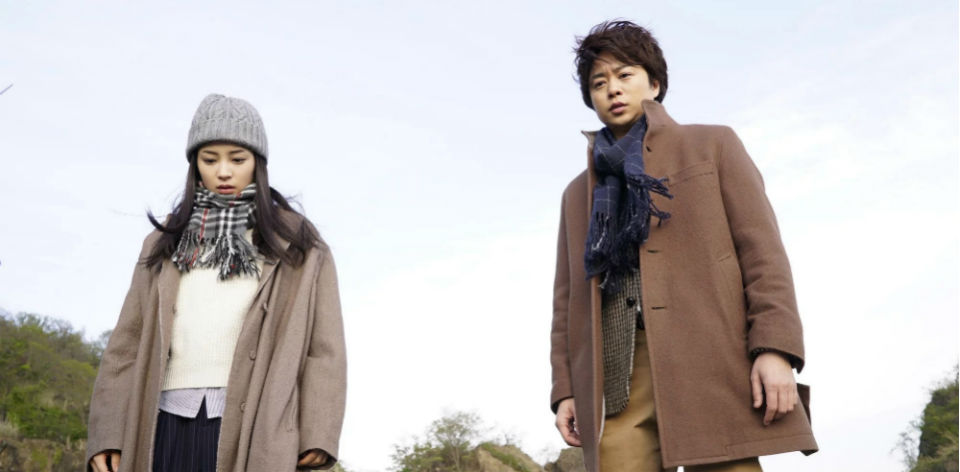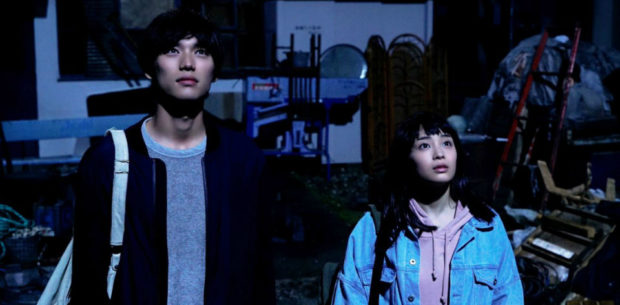The sheer amount of Takashi Miike’s makes him one of Japan’s most prolific directors, no matter how many films Sion Sono puts out in a year. Case in point is LAPLACE’S WITCH (ラプラスの魔女), Miike’s 102nd film released in his eclectic career. Coming hot on the heels of Blade of the Immortal and JoJo’s Bizarre Adventure: Diamond is Unbreakable – Chapter 1, Miike brings us another adaptation, taking us into murder mystery territory.
Based on the novel by Keigo Higashino, the film begins with the deaths of two people suffocated by hydrogen sulfide at two different hot springs. Baffled by this unlikely occurrence, the police enlist the help of geochemist Professor Shusuke Aoe (Sho Sakurai) to help solve the case. Along the way he meets Madoka Uhara (Suzu Hirose), who has her own theories about what will soon occur. Their stories intersect with a bigger mystery, including Kento Amakasu (Sota Fukushi).
LAPLACE’S WITCH is a curious mix of moods. It begins as a police procedural, kind of a slightly more ethereal version of a Law & Order episode. Yet the odd title refers to something more complex, albeit not necessarily more interesting. The “Laplace” of the title refers to mathematician and scholar Pierre-Simon Laplace. We won’t pretend to understand Laplace’s original theories, but themes of observation and statistical prediction permeate the back half of Miike’s film. At least we think they do. It’s around this point that the film loses some of the momentum gained in the opening acts.
There’s Detective Yuji Nakaoka (Hiroshi Tamaki) arrives like Robert Shaw in Jaws, while Sho Sakurai (better known as a member of the boy band Arashi) plays the idealistic professor to the hilt. Supporting cast includes the ubiquitous Lily Franky, although he seems to be one of several threads that are underdeveloped in Hiroyuki Yatsu’s script.
Where Miike really succeeds here is in his collaboration with regular photographer Kita Nobuyasu. The film opens with crisp and foreboding snowscapes as his camera glides across rooftops, and the almost frozen river that runs through the centre of town. He maintains this frigid aesthetic throughout, which for some will be the height of slickness, while for others it will only serve as another barrier to connecting with this mishmash of character archetypes.
Following the mathematical theme, it all winds up a bit formulaic. Critic Josh Hurtado has suggested that it’s been quite a while since we’ve seen a great film from Miike, perhaps not since 2012’s For Love’s Sake. Maybe Miike has recognised some of this in himself, with a potentially meta character of a film producer (played by veteran Etsushi Toyokawa) described as being “known for edgy themes that don’t pander to audiences.” Which is how we might have once described Miike’s work before it entered a familiar cycle over the last decade.
[stextbox id=”grey” bgcolor=”F2F2F2″ mleft=”5″ mright=”5″ image=”null”]![]() 2018 | Japan | DIRECTOR: Takashi Miike | WRITERS: Keigo Higashino (novel), Hiroyuki Yatsu | CAST: Sho Sakurai, Suzu Hirose, Sota Fukushi, Masanobu Takashima, Lily Franky, Etsushi Toyokawa | DISTRIBUTOR: Toho (JPN) | RUNNING TIME: 116 minutes | RELEASE DATE: 4 May 2018 (JPN) [/stextbox]
2018 | Japan | DIRECTOR: Takashi Miike | WRITERS: Keigo Higashino (novel), Hiroyuki Yatsu | CAST: Sho Sakurai, Suzu Hirose, Sota Fukushi, Masanobu Takashima, Lily Franky, Etsushi Toyokawa | DISTRIBUTOR: Toho (JPN) | RUNNING TIME: 116 minutes | RELEASE DATE: 4 May 2018 (JPN) [/stextbox]






